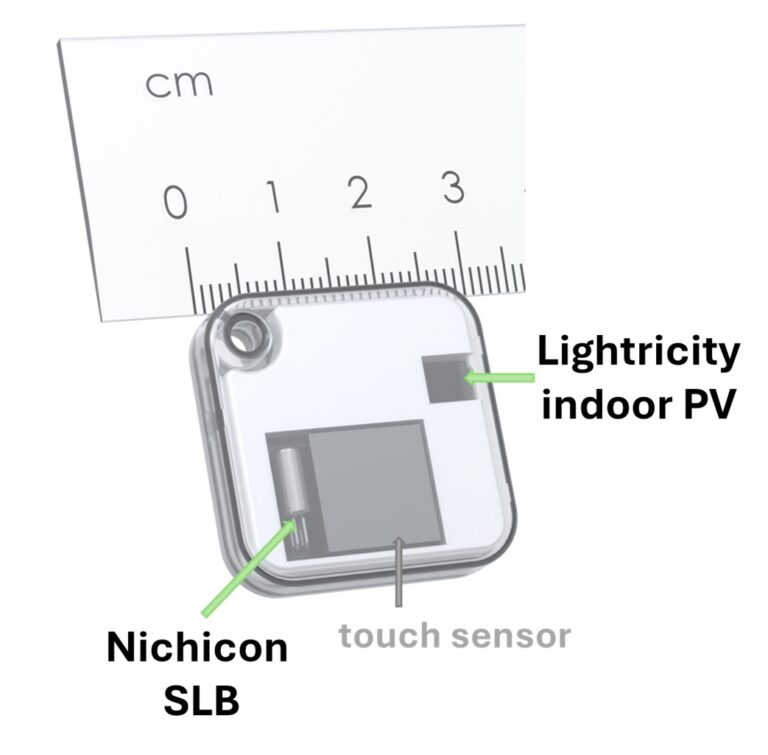British-based PV specialist Lightricity and Japanese capacitor manufacturer Nichicon have developed a PV-powered Bluetooth switch to remotely control home or office equipment such as lights, sliding doors or appliances.
UK indoor PV specialist Lightricity has integrated its energy harvesting modules with a rechargeable lithium titanate (LTO) battery supplied by Japan’s Nichicon and ultra-low power components into a new touch switch that can be used to control home and office equipment such as rotary and on lighting, opening and closing electronic doors, or activating devices.
The two companies plan to release a product based on the switch hardware platform in the next twelve months. “A key benefit is that the device is completely wireless and self-sufficient, but without the need for batteries, offering the user easy installation, improved durability and lower lifetime costs,” the spokesperson said. pv magazine.
The platform, called 4EverSwitch, measures 30mm x 30mm x 7mm and looks like a conventional on/off switch, but has low power Bluetooth (BLE) connectivity, a rechargeable LTO battery and a small energy harvesting PV panel that is smaller than 5 mm x 5 mm.
A tap on the touchpad activates a BLE signal which in turn activates a remotely connected device such as a lighting system, a door or industrial machinery.
Designers can choose a 4EverSwitch equipped with one of two Lightricity PV modules, the 4mm x 4mm EXL4040 model or the 5mm x 5mm EXL5050 model. They operate in low to bright ambient light, from 100 lux to 1000 lux.
The battery choices are a Nichicon SLB03070LR35 0.35 mAh unit or a medium capacity SLB03090LR80 0.8 mAh. According to the manufacturers, the Nichicon battery used in the device has been specially developed for Internet of Things (IoT) applications. It has a “high output power required for wireless communications” and a long service life. It is intended to prolong the operation of the device in cases where there is no light reaching the PV panel of the switch. Reportedly, the device can be charged even when the power from the PV unit is weak.
This content is copyrighted and may not be reused. If you would like to collaborate with us and reuse some of our content, please contact: editors@pv-magazine.com.


